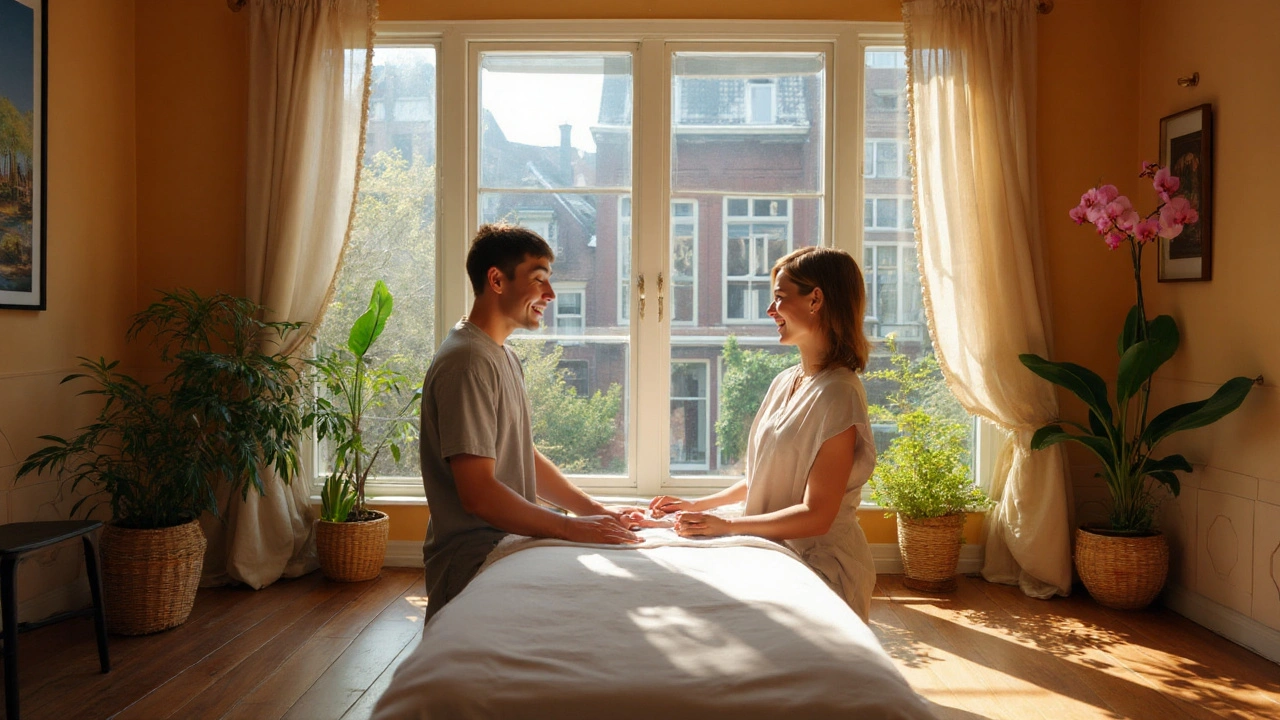What to Expect Thai Massage – A Simple Guide
If you’ve never tried Thai massage, the idea of lying on a mat while a therapist stretches you can feel a bit weird. But it’s actually a blend of gentle yoga, acupressure, and rhythmic breathing that leaves you relaxed and surprisingly energized. This guide walks you through what happens from the moment you walk in the door to the cool‑down at the end.
First things first: Thai massage is usually done on a floor mat, not a traditional table. You stay fully clothed, so you won’t be uncomfortable or exposed. The therapist will ask about any injuries or sore spots, then start with a light warm‑up. Think of it as a moving meditation – slow, deliberate stretches that wake up the joints and muscles.
Typical Session Flow
A standard 60‑minute Thai massage breaks down into three parts. The warm‑up lasts about 10 minutes and includes gentle rocking, light tapping, and simple breathing cues to settle your mind. Next comes the core work – the therapist uses their hands, elbows, knees, and feet to guide you through a series of stretches. You might feel a deep pull around the hips, a twist in the spine, or a rhythmic press along the legs. It can feel intense, but never painful; you should always speak up if something hurts.
The final 10‑15 minutes are a cool‑down. The therapist slows the pace, offers a light massage on the shoulders and neck, and may finish with a few minutes of quiet breathing. This is where the body absorbs the benefits – improved circulation, reduced tension, and a subtle boost of energy. Most people leave feeling both relaxed and alert, ready to tackle the day.
Choosing the Right Studio in Amsterdam
Amsterdam has a handful of Thai massage spots, from tiny boutique rooms to larger wellness centers. When you’re picking a place, check a few basics: is the therapist certified in Thai massage? Do they have good reviews about cleanliness and professionalism? A quick call to ask about the therapist’s experience with specific issues (like lower back pain) can save you a lot of guesswork.
Pricing in Amsterdam usually ranges from €70 to €120 for a full hour. Some studios offer shorter 30‑minute sessions for a quick stretch, but a full hour gives you the most complete experience. Look for places that let you discuss any health concerns before the session starts – that’s a sign they care about safety.
Another tip: arrive a few minutes early. Use that time to fill out a brief health questionnaire and settle in. It helps the therapist tailor the stretches to your body and makes the whole session smoother.
After the massage, drink plenty of water. Thai massage moves fluids around, and staying hydrated speeds up recovery. You might feel a little light‑headed right after – that’s normal. Take a short walk, stretch gently, and let your body settle into the new state of relaxation.
In short, a Thai massage is a moving, fully clothed stretch that blends yoga and pressure work. Expect a warm‑up, a series of guided stretches, and a calming cool‑down. Choose a reputable studio in Amsterdam, communicate your needs, and enjoy the mix of calm and vitality that follows.
Ready to try it? Pick a nearby studio, book a 60‑minute slot, and give yourself the chance to unwind while boosting flexibility and energy at the same time.
Thai Massage Techniques in Amsterdam: What to Expect and How to Prepare
Curious about Thai massage? Discover what a real session in Amsterdam is like, the techniques used, benefits, and what to expect before, during, and after.
